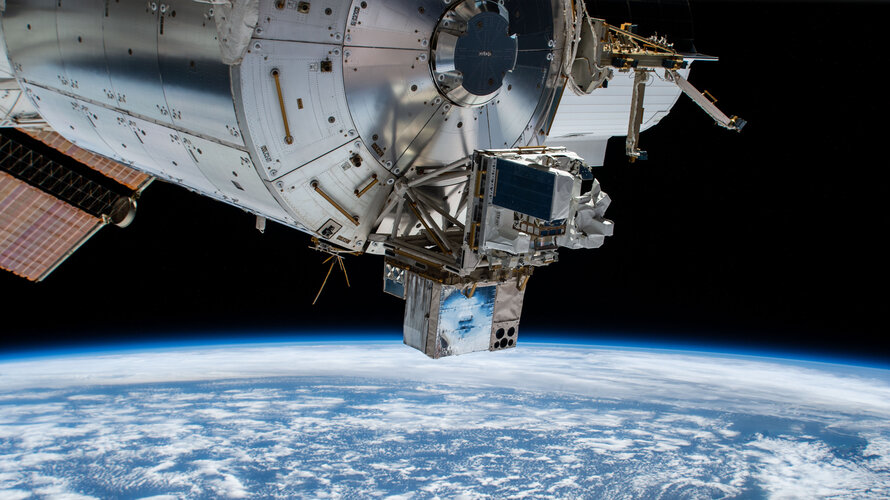The first-of-its-kind complement of instruments dubbed the ‘space storm hunter’ hangs out in its new location outside the International Space Station in this image taken by on of the Station’s external cameras.
The Atmosphere–Space Interactions Monitor, or ASIM for short, measures electric events in Earth’s upper atmosphere with cameras, photometers and X- and gamma-ray detectors.
Last week ASIM was switched off and moved by robotic arm to another spot outside the Columbus module to make room for an American payload. Now in its new location, the instrument is being activated and so far things are going well.
From its new vantage point, just next to its current one, ASIM is pointing in a different direction, slightly more towards the horizon instead of straight down. This will help researchers work out how much the atmosphere at different altitudes influences the processes of electrical discharges. It’s like viewing a firework display: one can enjoy the shapes more from the side than if one is just below the display!
Though designed to look for electrical discharges born in stormy weather conditions in Earth’s upper atmosphere, ASIM recently detected a unique gamma-ray burst from outer space.
The spurt turned out to be from an explosive giant flare from a magnetar located 10 million light-years away in a distant galaxy. Magnetars are a special type of neutron star – the collapsed core of what was once a supergiant star. This fortuitous observation was published in the December issue of Nature magazine.
ASIM was built by Danish company Terma, the Danish Technical University, the University of Bergen in Norway and the University of Valencia in Spain for the European Space Agency.



 Image:
Image: